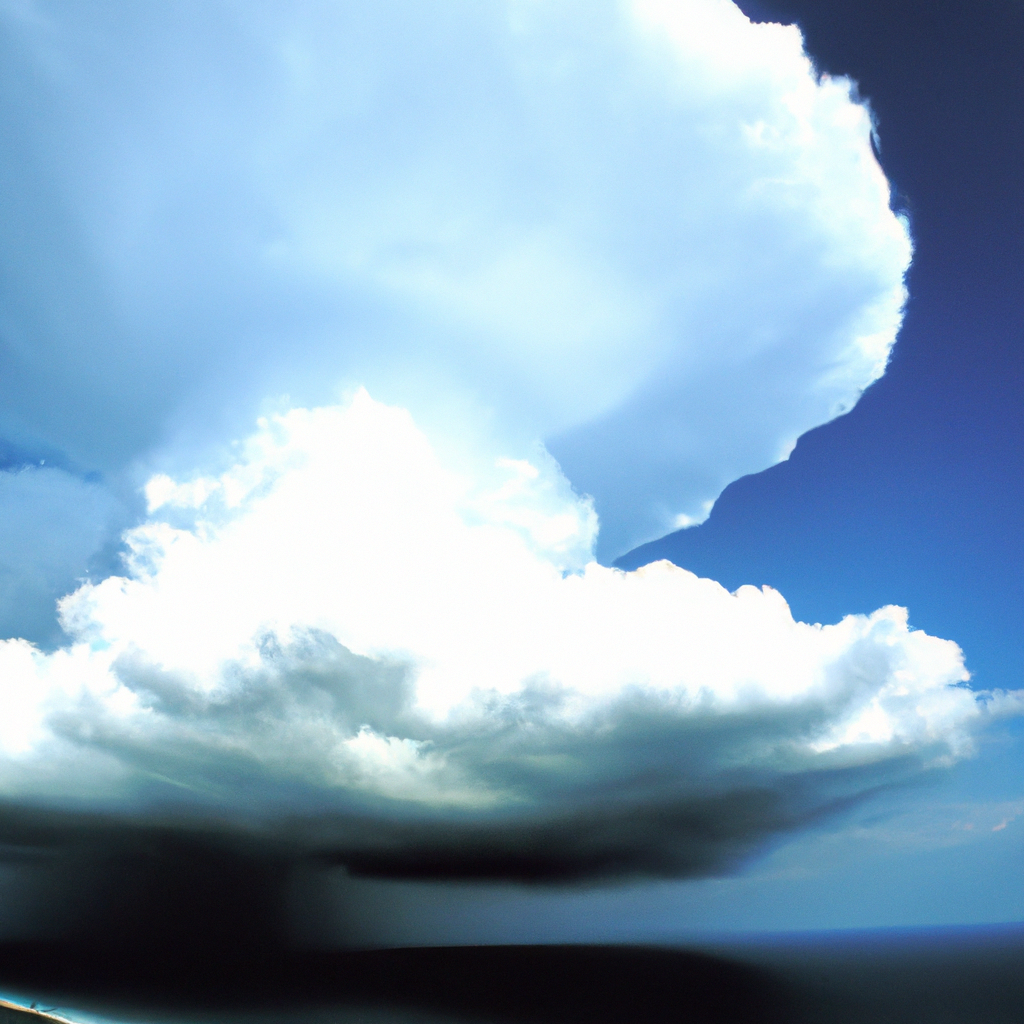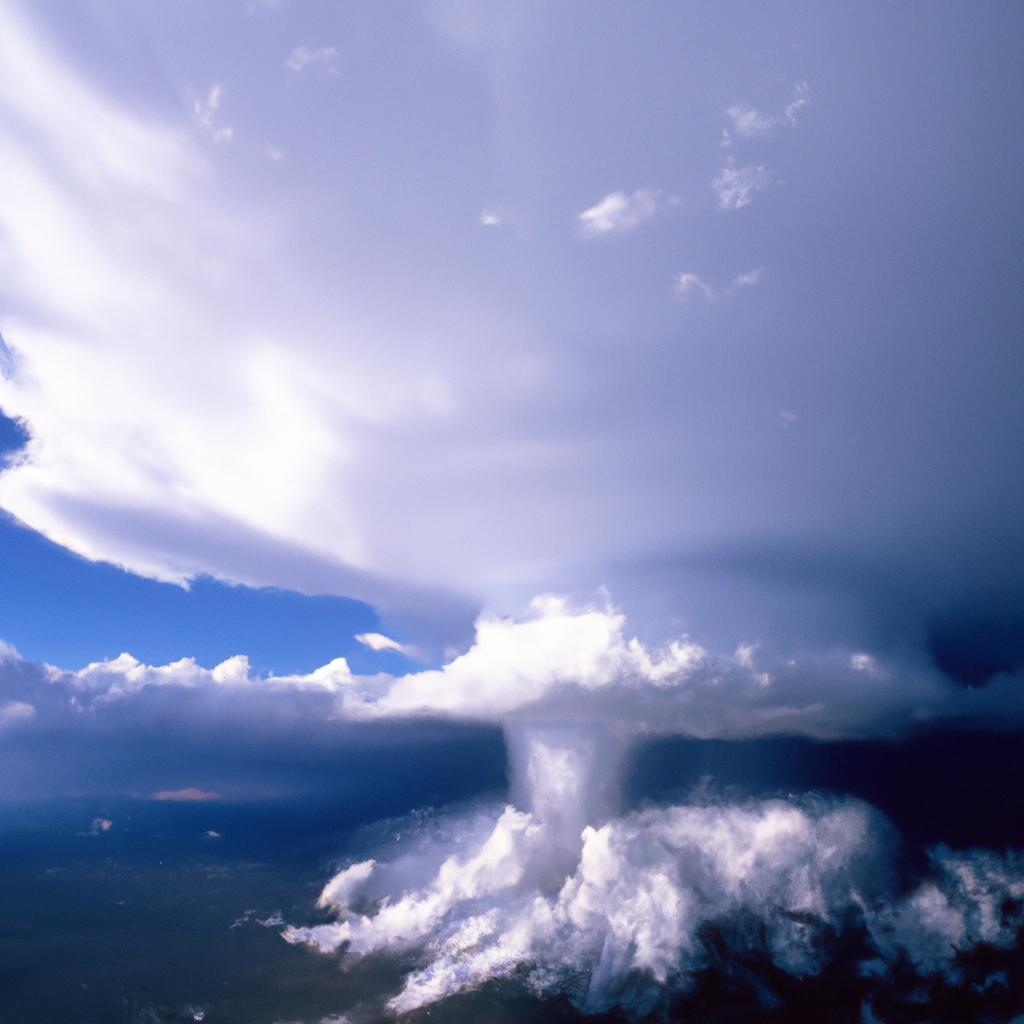Imagine having the power to control the weather, to mold and shape the very fabric of our environment. The concept of manipulating weather patterns might sound like something out of a futuristic sci-fi movie, but it is a field of scientific study that is rapidly gaining attention. In this article, we will explore the fascinating world of climate control, delving into the science behind it and examining the ethical implications that arise from such a power. From cloud seeding to geoengineering, get ready to embark on a journey that will leave you questioning the very nature of our relationship with the planet.
Understanding Weather Manipulation
Definition of weather manipulation
Weather manipulation, also known as climate control or weather modification, refers to the deliberate alteration of weather patterns and phenomena for various purposes. It involves the use of technological interventions to influence rainfall, snowfall, cloud formation, and other meteorological conditions.
Overview of the history of weather manipulation
Weather manipulation practices have a long and varied history, dating back centuries. Ancient civilizations, such as the Chinese, Greeks, and Romans, would conduct rituals or ceremonies to appeal to deities or gods for favorable weather conditions. However, the systematic study and implementation of weather manipulation techniques began in the mid-20th century.
Modern examples of weather manipulation
Today, weather manipulation is deployed in numerous contexts around the world. Examples include cloud seeding, the use of satellites and artificial intelligence in weather prediction, and the development of innovative techniques to manipulate weather patterns. These advancements have expanded the scope of weather manipulation and its potential applications.
The Science behind Weather Manipulation
The principle of cloud seeding
Cloud seeding is one of the most commonly employed techniques in weather manipulation. It involves dispersing substances, such as silver iodide or dry ice, into clouds to encourage the formation of ice crystals or rain droplets. This process enhances precipitation in areas experiencing water scarcity or drought conditions.
Use of satellites and artificial intelligence
Satellites and artificial intelligence play pivotal roles in weather manipulation. Satellites provide real-time data on atmospheric conditions, moisture levels, and weather patterns, allowing scientists to make accurate predictions. Artificial intelligence algorithms analyze vast amounts of data and help identify optimal conditions for weather manipulation interventions.
Challenges in weather prediction and manipulation
Despite advancements in technology, predicting and manipulating weather remains challenging. Weather systems are complex and influenced by numerous factors, including geographical topography, oceanic currents, and atmospheric dynamics. Uncertainties in weather models can impede the accuracy of manipulative interventions.
Innovations in weather manipulation techniques
Scientists and researchers constantly strive to develop new techniques and methods to improve weather manipulation. Innovations include the exploration of laser-based technologies that can induce rainfall, development of sophisticated computer models for localized weather control, and experimentation with electromagnetic fields to influence atmospheric conditions.

Ethics of Weather Manipulation
Balancing potential benefits and harms
Ethics plays a crucial role in weather manipulation. While the potential benefits of influencing weather patterns are significant, ethical considerations involve evaluating the potential harms caused by manipulation, such as unintended ecological consequences and disruption of natural weather cycles. Balancing the potential benefits with the risks is essential to ensure responsible use of weather manipulation technologies.
Determining who decides when and where to manipulate weather
Weather manipulation raises ethical questions regarding decision-making authority. Decisions about where and when to manipulate weather have significant implications for communities and ecosystems. Ensuring that decision-making processes involve transparent, inclusive, and interdisciplinary approaches can help mitigate ethical concerns and promote consensus-building.
Examining the potential for weaponization
Weather manipulation techniques possess the potential for weaponization, raising ethical concerns. The ability to trigger extreme weather events, such as hurricanes or droughts, can be misused for geopolitical purposes or as a form of warfare. Comprehensive international agreements and robust regulations are necessary to prevent the unethical use of weather manipulation technologies.
Impacts on Climate Change
Capability of weather manipulation to offset climate change
Weather manipulation techniques have been proposed as a means to mitigate the impacts of climate change. For example, increasing cloud cover or promoting rainfall in arid regions could potentially alleviate water scarcity and desertification. However, the extent to which weather manipulation can counteract the wide-ranging effects of climate change is a subject of ongoing debate and scientific research.
Potential adverse impacts on global climate
While weather manipulation may address localized issues, there is concern regarding its potential adverse effects on the global climate system. Altering weather patterns in one area can have cascading effects on weather systems elsewhere, leading to unintended consequences and disrupting natural climate processes. Careful consideration of broader climate impacts is essential in the ethical implementation of weather manipulation techniques.
Long-term implications of weather manipulation
Weather manipulation interventions require a long-term perspective. Manipulating weather systems may lead to unintended consequences and potentially irreversible changes to regional or global climates. Scientific research should assess the long-term impacts of weather manipulation techniques to inform responsible decision-making and ensure the sustainability of our planet’s climate systems.

Legal and Regulatory Aspects
Current state of laws and regulations
The legal and regulatory landscape for weather manipulation varies across countries. Some nations have specific regulations governing weather modification activities, while others have limited or no legislation in place. For example, the United States has a patchwork of state-level regulations, while China has established a comprehensive framework governing weather modification practices.
Gap areas in legislation
Despite progress in legal frameworks, gaps exist in weather manipulation legislation. These gaps include defining liability for damages resulting from manipulative interventions, establishing international standards for weather modification activities, and addressing the handling of cross-border weather manipulation concerns. Filling these gaps is vital to ensure responsible and accountable use of weather manipulation technologies.
International law considerations
Weather manipulation raises significant international law considerations. The potential transboundary impacts of manipulative activities require cooperation and coordination among nations. Establishing international agreements and protocols to govern weather manipulation practices can foster collaboration, promote transparency, and prevent the misuse of weather manipulation technologies.
Societal Perception and Controversies
Public perception of weather manipulation
Public perception of weather manipulation is diverse and influenced by various factors. While some view it as a tool for addressing climate challenges and mitigating natural disasters, others express concerns about the potential risks and unintended consequences. Raising public awareness, promoting education, and fostering transparent dialogue are pivotal in shaping a well-informed and balanced public perception.
Conspiracy theories and misinformation
Weather manipulation is often a subject of conspiracy theories and misinformation. Claims of secretive operations or deliberate manipulation to create disasters or control populations have gained traction in certain circles. Addressing misinformation through scientific communication, sharing research findings, and transparently discussing the limitations and potential risks of weather manipulation can help dispel unfounded conspiracy theories.
Influence of media portrayal
Media plays a significant role in shaping public perception and understanding of weather manipulation. Media portrayal can contribute to public acceptance or skepticism of these practices. It is crucial for the media to present accurate information, promote critical thinking, and provide a balanced representation of the scientific, ethical, and societal aspects of weather manipulation.

Case Studies of Weather Manipulation
The Beijing Olympics weather control effort
One notable case study of weather manipulation occurred during the 2008 Beijing Olympics. To ensure clear skies and reduce air pollution, the Chinese government employed cloud seeding techniques to induce rainfall before the games. This intervention aimed to improve air quality and prevent rainfall during the opening ceremony. The success of this weather control effort showcased the potential of weather manipulation in specific contexts.
Cloud seeding in the UAE
Another prominent example of weather manipulation is the cloud seeding initiatives in the United Arab Emirates (UAE). Due to its arid climate, the UAE heavily relies on cloud seeding techniques to enhance precipitation and address water scarcity. The UAE has implemented cloud seeding projects involving ground-based generators and airborne dispersal methods, successfully increasing rainfall in certain regions.
US military’s Operation Popeye
Operation Popeye, carried out by the US military during the Vietnam War, serves as a historical case study of weather manipulation for military purposes. With the goal of extending the monsoon season in Vietnam, the military used cloud seeding to intensify rainfall, hampering enemy troop movements. This covert operation raised ethical concerns about the weaponization of weather manipulation technologies.
Economic Factors of Weather Manipulation
Costs involved in weather manipulation
Weather manipulation entails significant costs, including research and development expenses, technological infrastructure investments, and operational costs. Implementing cloud seeding projects, maintaining satellite systems, and conducting ongoing monitoring and analysis require substantial financial resources. The economic viability of weather manipulation interventions depends on the potential benefits and cost-benefit analysis.
Economic benefits of successful manipulation
Successful weather manipulation can yield various economic benefits. For instance, increasing rainfall in agricultural areas can enhance crop yields and food production. Weather manipulation interventions can also contribute to water resource management, facilitate tourism and outdoor activities, and support industries that rely on specific weather conditions, such as winter sports or renewable energy.
Economic risks of unsuccessful or harmful manipulation
Unintended consequences or unsuccessful weather manipulation interventions can result in economic risks. Droughts, floods, or extreme weather events caused by manipulative actions can have devastating impacts on agriculture, infrastructure, and local economies. The economic risks associated with weather manipulation underscore the importance of thorough research, responsible implementation, and comprehensive risk assessments.

Future of Weather Manipulation
Possible technological advancements
The future of weather manipulation holds numerous possibilities for technological advancements. Continued developments in satellite technology, artificial intelligence, and computer modeling can enhance the accuracy and effectiveness of weather manipulation interventions. Exploring novel methods, such as atmospheric carbon capture or using nanotechnology to influence weather patterns, may also shape the future of this field.
Potential changes in ethical considerations
As weather manipulation technologies evolve, ethical considerations will likely evolve as well. Public engagement, interdisciplinary collaboration, and ongoing dialogue can help adapt ethical frameworks to emerging technologies and applications. Attention should be given to ensuring transparency, accountability, and the inclusion of diverse perspectives in decision-making processes related to weather manipulation.
Predictions for future regulatory frameworks
The future regulatory frameworks for weather manipulation will likely incorporate advancements in international cooperation and legal considerations. Strengthening international agreements, establishing standardized protocols, and filling current legislative gaps will create a more robust regulatory environment. Balancing safety, sustainability, and societal impacts will guide the development of regulations governing weather manipulation technologies.
Impact on industries and agriculture
Weather manipulation technologies have the potential to significantly impact various industries and agriculture. For example, targeted rainfall interventions can benefit agricultural productivity, water resource management, and renewable energy generation. Industries reliant on specific weather conditions, such as winter tourism or outdoor events, may also benefit from controlled weather patterns. Weather manipulation can shape economic sectors and influence regional development.
Mitigating Side Effects and Risks
Identifying potential hazards
The identification and assessment of potential hazards associated with weather manipulation interventions are crucial for responsible implementation. Evaluating the environmental, ecological, and social impacts of manipulative actions, as well as potential unintended consequences, can help identify and address risks. Comprehensive research and risk assessments are vital for minimizing side effects and ensuring the long-term sustainability of weather manipulation practices.
Strategies for minimizing undesirable outcomes
Strategies to minimize undesirable outcomes include robust monitoring and evaluation systems, adaptive management approaches, and stakeholder engagement. Continual assessment of manipulative interventions, ongoing research, and adaptive decision-making processes can help detect and address any harmful effects promptly. Engaging with local communities, stakeholders, and experts allows for a more comprehensive understanding of potential consequences and promotes responsible intervention implementation.
Monitoring and aftercare methods
Monitoring and aftercare methods are essential components of responsible weather manipulation practices. Implementing comprehensive monitoring systems to evaluate the short-term and long-term effects of manipulative actions aids in assessing their success and modifying techniques when necessary. Effective aftercare measures should be in place to mitigate any adverse impacts, restore ecological balance, and ensure the resilience of affected ecosystems.
In conclusion, weather manipulation is a complex and multidimensional field that encompasses scientific, ethical, legal, societal, economic, and environmental considerations. As technological advancements continue, it is crucial to approach weather manipulation responsibly, with a balance between potential benefits and risks. Robust legal frameworks, comprehensive research, and transparent decision-making processes should guide the future of weather manipulation to ensure its sustainability and contribution to human well-being.











